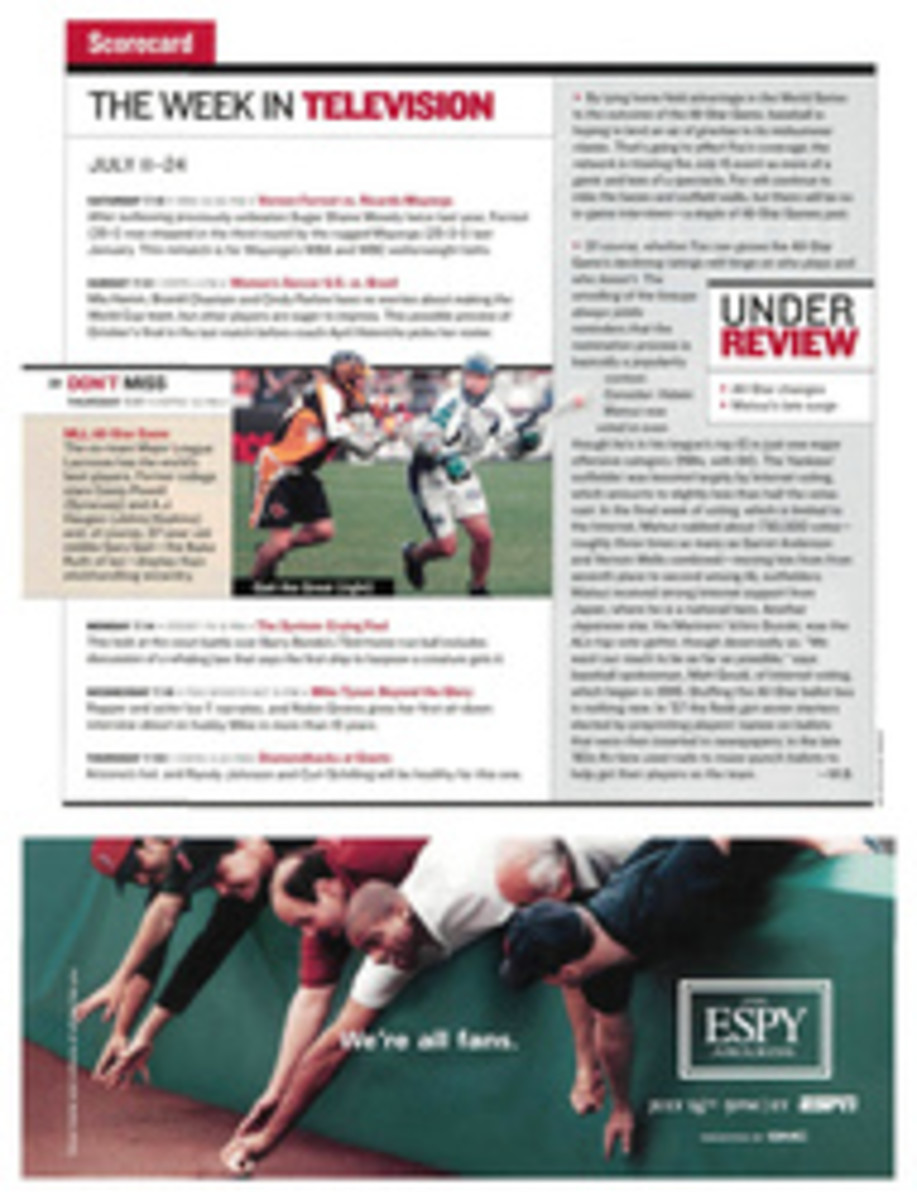
The Sadness at Baylor The case of Patrick Dennehy has remained as elusive as the player himself
Long before he vanished from the Texas plains, Patrick Dennehy
defied easy explanation. Was the promising Baylor basketball
player brooding or gregarious? A devoted teammate or a locker
room instigator? It depended on the day. The biracial Dennehy was
a rare mix indeed, a born-again Christian who revered the slain
gangsta rapper Tupac Shakur. He was just as comfortable reading
the Bible as he was reading Tupac's poetry collection, A Rose
That Grew from Concrete.
By Monday, as a police search for Dennehy moved beyond its third
week, producing no body and no arrests, friends and loved ones
feared he had met the same tragic fate that befell Tupac nearly
seven years ago. What stunned them further was that police had
named Carlton Dotson, 21, Dennehy's roommate and former teammate,
a "person of interest" in a case that investigators were treating
as a potential homicide.
In a police affidavit an unnamed informant alleged that Dotson
told a cousin he had shot Dennehy in the head. As Dotson's lawyer
dismissed that claim, reports circulated that Dotson and Dennehy
had bought guns together last month. Friends of Dennehy said he
and Dotson armed themselves because they'd been threatened by
another Baylor player, Harvey Thomas.
Sitting in his office in Waco last Wednesday, Bears coach Dave
Bliss called the disappearance "a bad dream. If you lose a
basketball game, you can go fix the offense or the defense,"
Bliss said. "This is just a helpless feeling."
Bliss arrived at Baylor four years ago to revive its moribund
hoops program, which was still reeling from an academic scandal
and had gone 0-16 in conference play. In his second season the
59-year-old coach led the Bears to a 19-12 record thanks in part
to a roster with four transfers. Bliss was expecting similar
results next fall with the additions of Dennehy and Thomas, a
6'8" forward and former top 30 national high school prospect
whose itinerant history includes stops at five high schools and
four colleges.
Dennehy, a 6'10", 230-pound junior from Santa Clara, Calif.,
began his college career at New Mexico, where he was voted
honorable mention All-Mountain West as a sophomore in 2001-02.
But he never felt entirely comfortable in at the school, friends
said. In February 2002 he argued with a teammate during a loss at
Air Force and stormed off the court. Two months later he was
kicked off the team after leaving a workout. Upon transferring to
Baylor, though, Dennehy embraced religion, hosted prospective
recruits (Thomas was one of the players he helped land) and
called his move a "fresh start" on a track he hoped would lead to
the NBA.
Whipsawed by an investigation that had yielded more questions
than answers, Bliss nevertheless prepared to hit the recruiting
trail in Teaneck, N.J., for this week's Adidas ABCD Camp.
"There's no road map out of this jam," a red-eyed Bliss said last
Thursday. "When I walk into Teaneck or any other place, I know
there are people who know what happened. But I'm going to go out
and work hard to represent Baylor."
Meanwhile, Dennehy's loved ones waited and worried. In
Albuquerque his longtime girlfriend, Jessica De La Rosa, logged
onto the Tiffany website and stared at the modest Elsa Peretti
engagement ring she had registered on her wish list. In Carson
City, Nev., Dennehy's family--mother Valorie Brabazon, stepfather
Brian Brabazon and 14-year-old half sister Wynn--clung resolutely
to the present tense. "As long as Patrick hasn't been found, he's
alive," Brian said. And in Tacoma, Wash., Patrick Dennehy, the
missing player's father, lamented a sad coincidence: Shawn
Dennehy, Patrick's older half brother, was 19 when he died in a
car accident on June 15, 1997, nearly six years to the day before
Patrick was last seen alive.
As the case turned cold and hopes for Dennehy's safe return
dimmed, it was hard not to think of his well-worn copy of Tupac's
A Rose That Grew from Concrete and the haunting lines of a man
who predicts he will die before his time. "I have come to grips
with the possibility/And wiped the last tear from my eyes,"
Shakur wrote before his 1997 murder.
The poem, which Dennehy had read many times, was called "In the
Event of My Demise."
--Grant Wahl
COLOR PHOTO: BAYLOR UNIVERSITY/AP "A BAD DREAM" Dennehy's loved ones held out hope that he'd return.
"The Red Wings think the notoriously mercurial Hasek is certain
to come back." --RETURNED CZECH? PAGE 22

